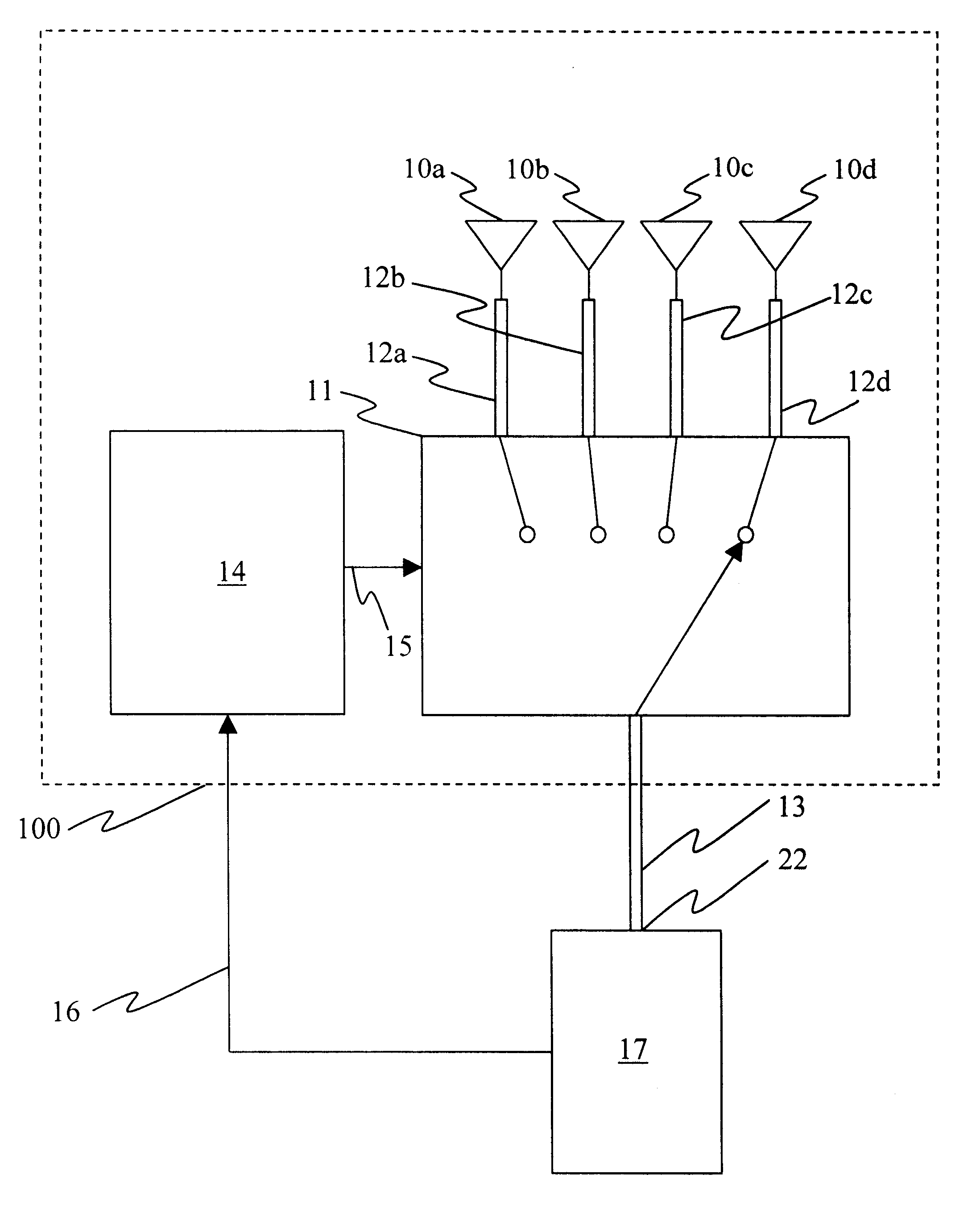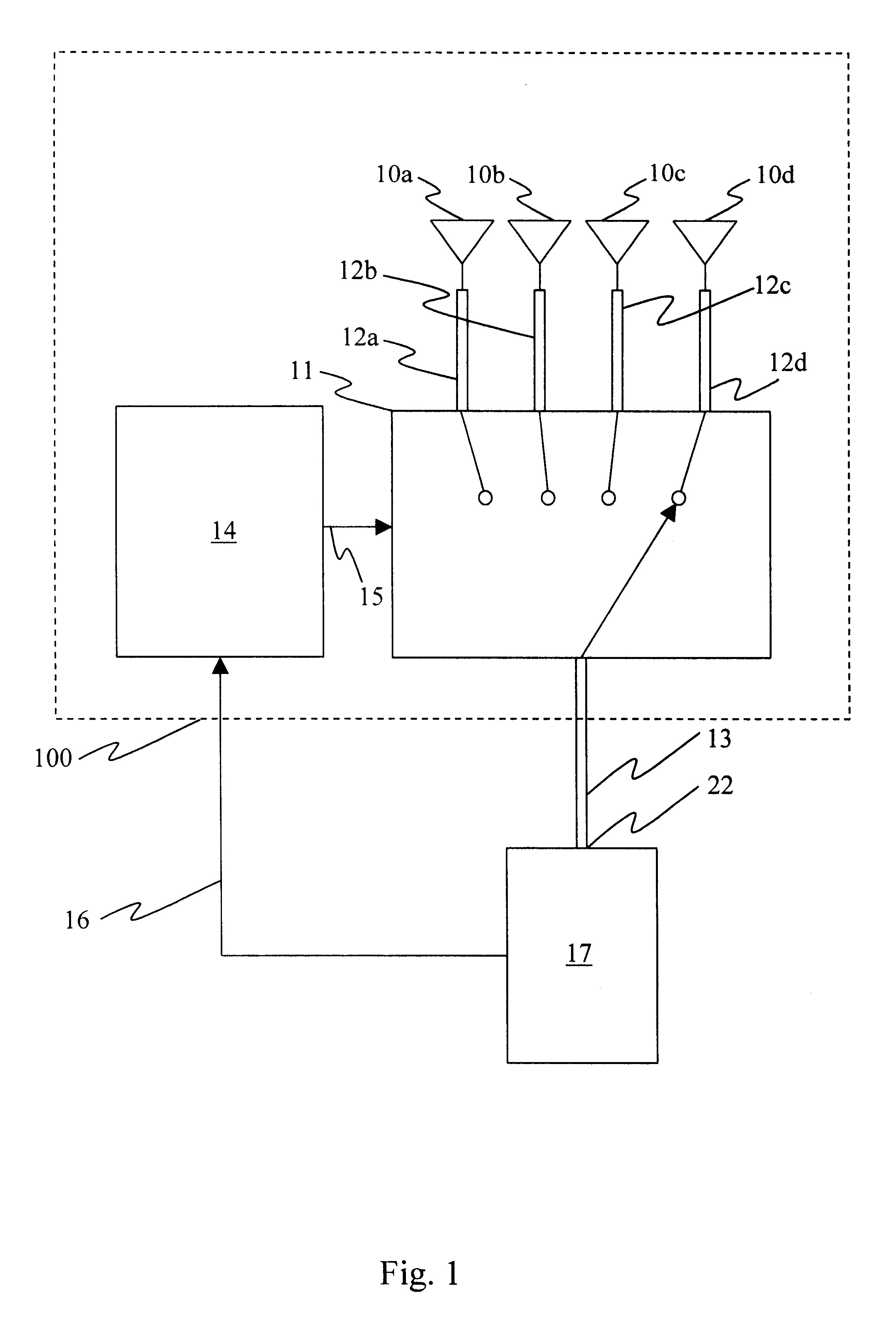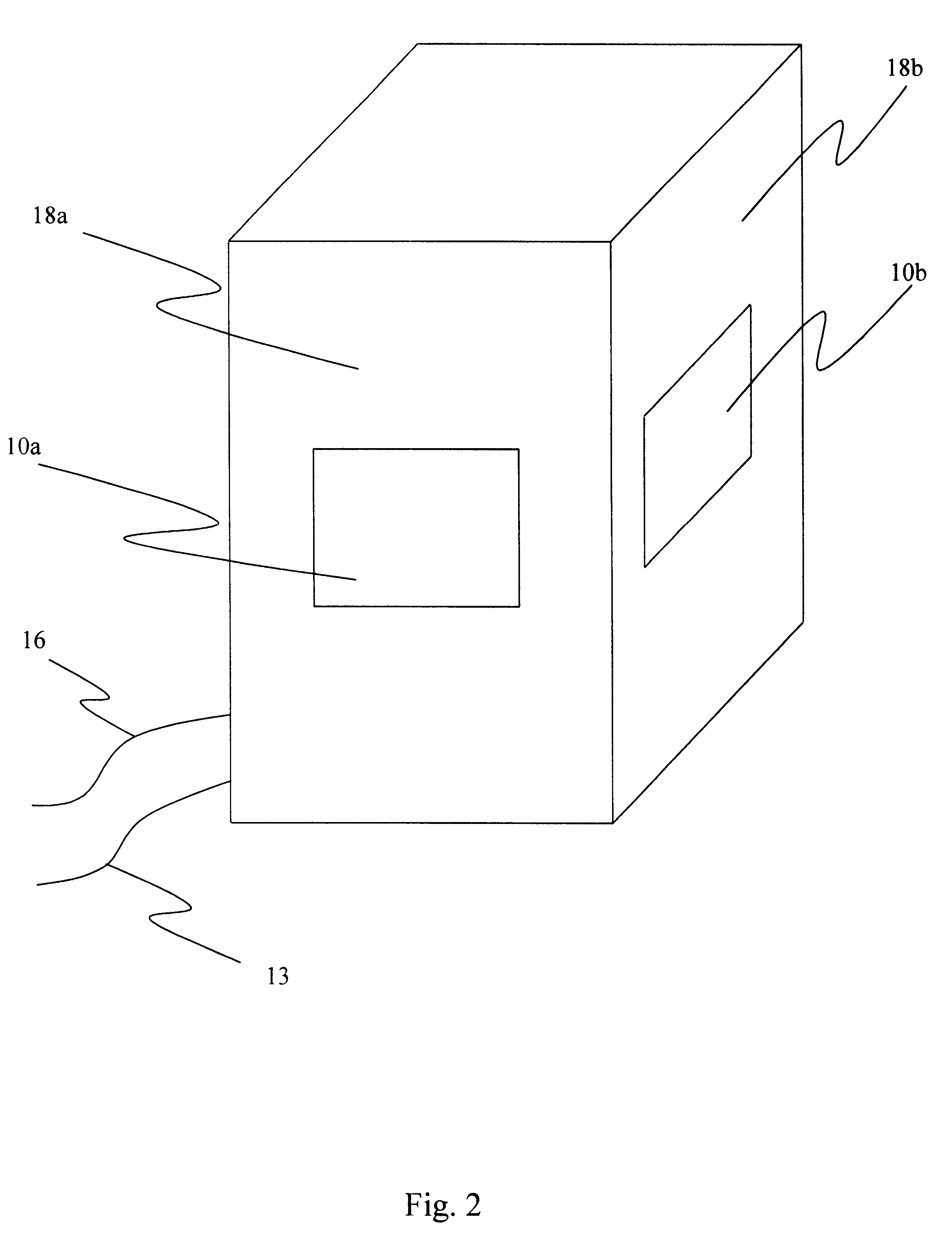Subscriber based smart antenna
a smart antenna and subscriber technology, applied in the direction of resonant antennas, radiating element structural forms, transmission, etc., can solve the problems of limited time domain multiple access (tdma) protocols, transmission and reception, and relatively complex techniques described in nowak
- Summary
- Abstract
- Description
- Claims
- Application Information
AI Technical Summary
Problems solved by technology
Method used
Image
Examples
Embodiment Construction
Referring to the drawings, FIG. 1 shows a block diagram of the smart antenna 100 connected to a subscriber unit 17 according to the present invention. The smart antenna consists of four antenna elements, 10a, 10b, 10c, and 10d, a radio frequency switch 11, and a controller 14. Each antenna element 10a, 10b, 10c, and 10d is connected to the selected port of the RF switch 11 through corresponding transmission lines 12a, 12b, 12c, and 12d respectively that transfer RF signals between the antenna elements 10a, 10b, 10c, and 10d and the RF switch 11. The common port of RF switch 11 is connected to subscriber unit antenna port 22 through the smart antenna transmission line 13 that transfers RF signals between the RF switch 11 and subscriber unit antenna port 22. The controller 14 is connected to RF switch 11 through a control line 15 that transfers signals from the controller 14 to the RE switch 11 and subscriber unit antenna port 22. The controller 14 is connected to the RF switch 11 thr...
PUM
 Login to View More
Login to View More Abstract
Description
Claims
Application Information
 Login to View More
Login to View More - R&D
- Intellectual Property
- Life Sciences
- Materials
- Tech Scout
- Unparalleled Data Quality
- Higher Quality Content
- 60% Fewer Hallucinations
Browse by: Latest US Patents, China's latest patents, Technical Efficacy Thesaurus, Application Domain, Technology Topic, Popular Technical Reports.
© 2025 PatSnap. All rights reserved.Legal|Privacy policy|Modern Slavery Act Transparency Statement|Sitemap|About US| Contact US: help@patsnap.com



